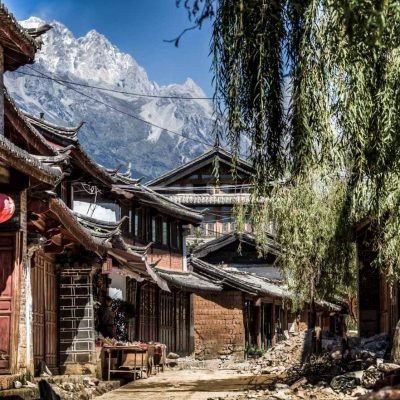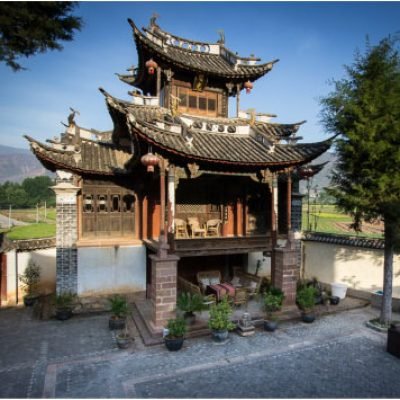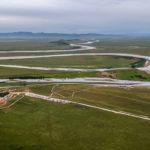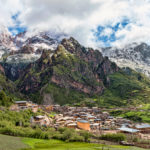The Old Town of Lijiang is located on the Lijiang plain at an elevation of 2,400 meters in southwest Yunnan Province, China. The Jade Dragon Snow Mountains are to the northwest and this incredibly scenic and snowy range is easily viewed as you take a leisurely stroll through time in the old quarters of Lijiang. These mountains are the source of much snowmelt that supplies the rivers and springs which water the plain and supply the nearby Heilong Pool (Black Dragon Pond) and the classic canals that wind through the old town of Lijiang .
The Old Town of Lijiang contains 3 main areas and you could easily spend 1-2 days getting lost amidst the cobblestone streets and antique coppersmiths that give this area its characteristic charm. These 3 areas include: Dayan Old Town (including the Black Dragon Pond), Baisha Old Town, and Shuhe Old Town. Dayan Old Town was established in the Ming dynasty as a commercial center and includes the Lijiang Junmin Prefectural Government Office; the Yizi pavilion and the Guabi Tower. Numerous two-storied timber-framed houses combine elements of Han and Zang dynasty architecture and decoration in the arched gateways, screen walls, courtyards, tiled roofs, and carved roof beams are representative of the Naxi culture and are built in rows following the contours of the mountainside. Wooden elements are elaborately carved with domestic and cultural elements – pottery, musical instruments, flowers and birds.
Baisha Old Town, though, was established earlier than the Dayan Old Town sector. Baisha was built during the Song and Yuan dynasties and is located 8km north of the Dayan Old Town. Houses here are arranged on a north-south axis around a central, terraced square. The religious complex includes halls and pavilions containing over 40 paintings dating from the early 13th century, which depict subjects relating to Buddhism, Taoism and the life of the Naxi people, incorporating cultural elements of the Bai people. Together with the Shuhe housing cluster located 4km north-west of Dayan Old Town, these quaint mountain settlements reflect the blend of local cultures, folk customs and traditions over several centuries. You can even see the local tile work depicted on the courtyard floors of the homes representing bats, cats, and other animals thought to scare away local spirits. The local Naxi people still walk barefoot over these intricate tile floorscapes, feeling every ridge and crest of the hand laid tilework in what they call “a free foot massage”.
The colorful village space, the delightful sounds of the water, the outstanding folk art and calligraphy and the old style of the local architecture all make for a very pleasant environment that will leave you with a deep feeling of peace in this gem hidden among the mountains.








